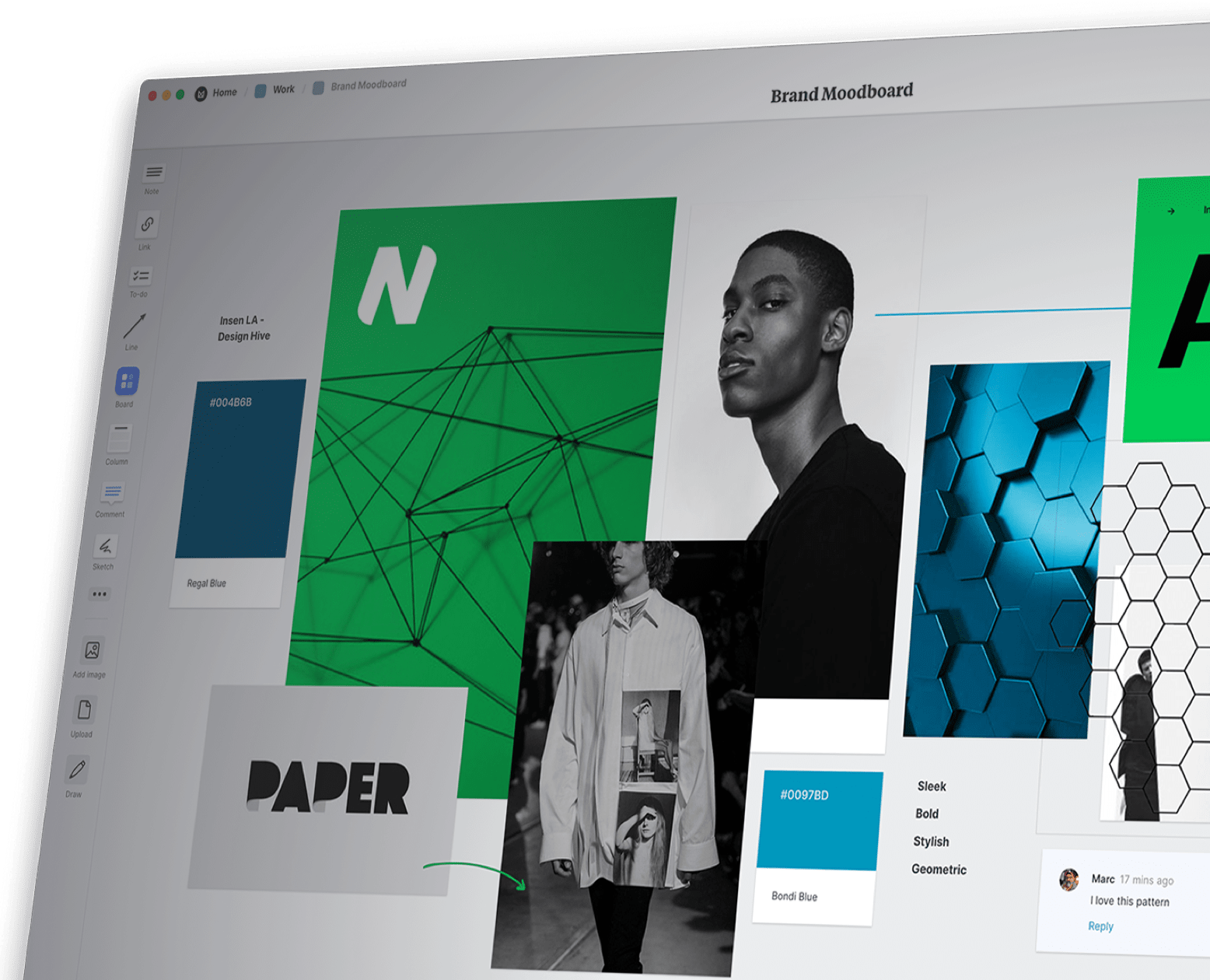
Moodboard Creator: Complete Buyer's Guide
AI-powered visual curation platform
Moodboard Creator positions itself as an AI-powered visual curation platform that transforms creative workflows by generating professional moodboards from simple text prompts in under 5 minutes[57][63]. The platform differentiates through product integration capabilities that auto-generate shopping lists from visual concepts—a feature absent from competitors like Adobe Firefly and Canva[56][59].
Market Position & Maturity
Market Standing
Moodboard Creator operates in the rapidly expanding AI moodboard market projected to reach $6.13B by 2032 at 22.4% CAGR[20].
Proof of Capabilities
Customer Evidence
Moodboard Creator demonstrates effectiveness through documented user success in brand identity projects and style adaptation scenarios[56][80].
Quantified Outcomes
Quantified outcomes include the platform's ability to generate moodboards in 2-7 minutes versus 45-180 minutes traditional methods[57][63].
Market Validation
Market validation comes from the platform's positioning within the growing AI design tool adoption trend, where web designers lead adoption at 51% daily usage[23] and interior designers report 63% adoption rates[3][27].
AI Technology
Moodboard Creator's AI engine processes natural language prompts to generate visual concepts, integrating automated image sourcing via Unsplash and Pixabay[63][95].
Architecture
The web-based architecture requires no mobile app installation, though hardware requirements may vary based on rendering complexity[60][73].
Primary Competitors
Adobe Firefly (enterprise-focused with Creative Cloud integration)[4][49], Canva Magic Studio (significant SMB market presence)[6][9], and specialized solutions like MyMap.AI (3M+ users with natural language processing)[1].
Competitive Advantages
Competitive advantages include the unique auto-generated shopping lists from visual concepts[56][59], accessible $12.99 monthly pricing[63][95], and drag-and-drop simplicity appealing to both beginners and professionals[63][95].
Market Positioning
Market positioning targets the middle tier between freemium tools and enterprise solutions, focusing on SMB teams seeking practical AI productivity enhancement without extensive feature complexity.
Win/Loss Scenarios
Win scenarios favor organizations prioritizing ease-of-use, product integration, and cost-effectiveness over advanced features. Loss scenarios include organizations needing 3D capabilities, enterprise-grade collaboration, or extensive customization where specialized solutions provide better fit[79][102].
Key Features

Pros & Cons
Use Cases
Pricing
Featured In Articles
Comprehensive analysis of AI Moodboard Creators for AI Design for AI Design professionals. Expert evaluation of features, pricing, and implementation.
How We Researched This Guide
About This Guide: This comprehensive analysis is based on extensive competitive intelligence and real-world implementation data from leading AI vendors. StayModern updates this guide quarterly to reflect market developments and vendor performance changes.
147+ verified sources per analysis including official documentation, customer reviews, analyst reports, and industry publications.
- • Vendor documentation & whitepapers
- • Customer testimonials & case studies
- • Third-party analyst assessments
- • Industry benchmarking reports
Standardized assessment framework across 8 key dimensions for objective comparison.
- • Technology capabilities & architecture
- • Market position & customer evidence
- • Implementation experience & support
- • Pricing value & competitive position
Research is refreshed every 90 days to capture market changes and new vendor capabilities.
- • New product releases & features
- • Market positioning changes
- • Customer feedback integration
- • Competitive landscape shifts
Every claim is source-linked with direct citations to original materials for verification.
- • Clickable citation links
- • Original source attribution
- • Date stamps for currency
- • Quality score validation
Analysis follows systematic research protocols with consistent evaluation frameworks.
- • Standardized assessment criteria
- • Multi-source verification process
- • Consistent evaluation methodology
- • Quality assurance protocols
Buyer-focused analysis with transparent methodology and factual accuracy commitment.
- • Objective comparative analysis
- • Transparent research methodology
- • Factual accuracy commitment
- • Continuous quality improvement
Quality Commitment: If you find any inaccuracies in our analysis on this page, please contact us at research@staymodern.ai. We're committed to maintaining the highest standards of research integrity and will investigate and correct any issues promptly.